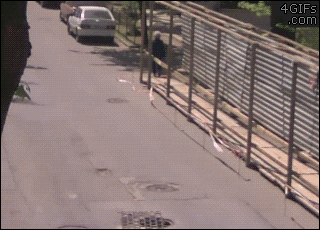Building a car that can reliably zip across town without human intervention has become something of a benchmark for many tech-minded auto manufacturers, but engineers are running into a major hurdle: this country’s outdated and poorly maintained roads.
Self-driving cars rely on an array of sensors, cameras and computers to calculate things like speed, direction, and obstructions on the road. But as Reuters points out, an estimated 65 percent of roadways in the United States are in poor condition, and cars are struggling to figure out how to interpret things like faded lane markers and damaged road signs.
Complicating matters further, unlike most developed countries there are no strict standards for wayfinding in the United States. Signage varies state to state and sometimes county to county, traffic lights can be oriented differently, and pavement markers often use different kinds of paint. Computers must interpret all of these anomalies in real time, sometimes traveling upwards of 70 miles per hour.
To compensate for the lack of reliable infrastructure, manufactures are being forced to install even more sensors, which further adds to the cost of the vehicle.
